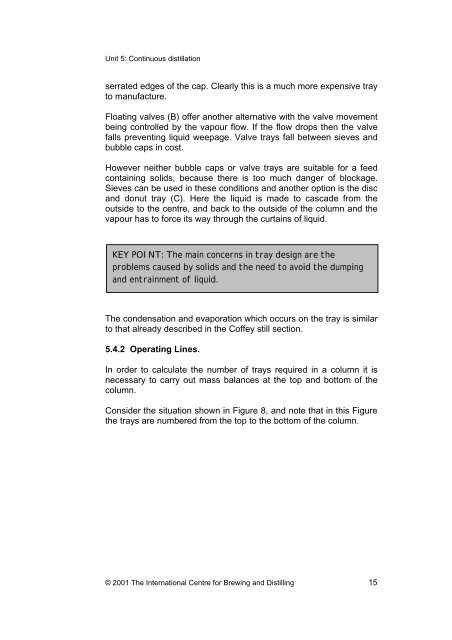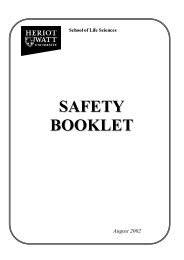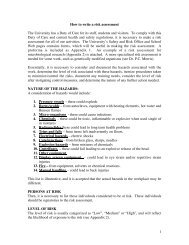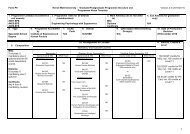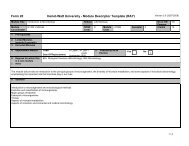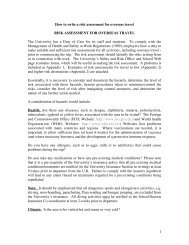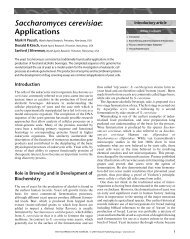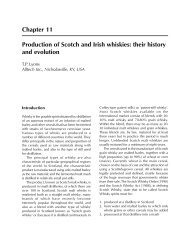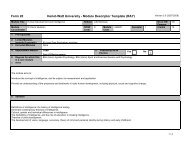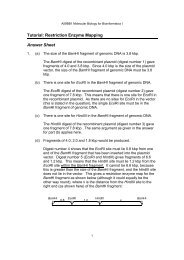Unit 5 - Continuous Distillation - School of Life Sciences
Unit 5 - Continuous Distillation - School of Life Sciences
Unit 5 - Continuous Distillation - School of Life Sciences
- No tags were found...
You also want an ePaper? Increase the reach of your titles
YUMPU automatically turns print PDFs into web optimized ePapers that Google loves.
<strong>Unit</strong> 5: <strong>Continuous</strong> distillationserrated edges <strong>of</strong> the cap. Clearly this is a much more expensive trayto manufacture.Floating valves (B) <strong>of</strong>fer another alternative with the valve movementbeing controlled by the vapour flow. If the flow drops then the valvefalls preventing liquid weepage. Valve trays fall between sieves andbubble caps in cost.However neither bubble caps or valve trays are suitable for a feedcontaining solids, because there is too much danger <strong>of</strong> blockage.Sieves can be used in these conditions and another option is the discand donut tray (C). Here the liquid is made to cascade from theoutside to the centre, and back to the outside <strong>of</strong> the column and thevapour has to force its way through the curtains <strong>of</strong> liquid.KEY POINT: The main concerns in tray design are theproblems caused by solids and the need to avoid the dumpingand entrainment <strong>of</strong> liquid.The condensation and evaporation which occurs on the tray is similarto that already described in the C<strong>of</strong>fey still section.5.4.2 Operating Lines.In order to calculate the number <strong>of</strong> trays required in a column it isnecessary to carry out mass balances at the top and bottom <strong>of</strong> thecolumn.Consider the situation shown in Figure 8, and note that in this Figurethe trays are numbered from the top to the bottom <strong>of</strong> the column.© 2001 The International Centre for Brewing and Distilling 15


